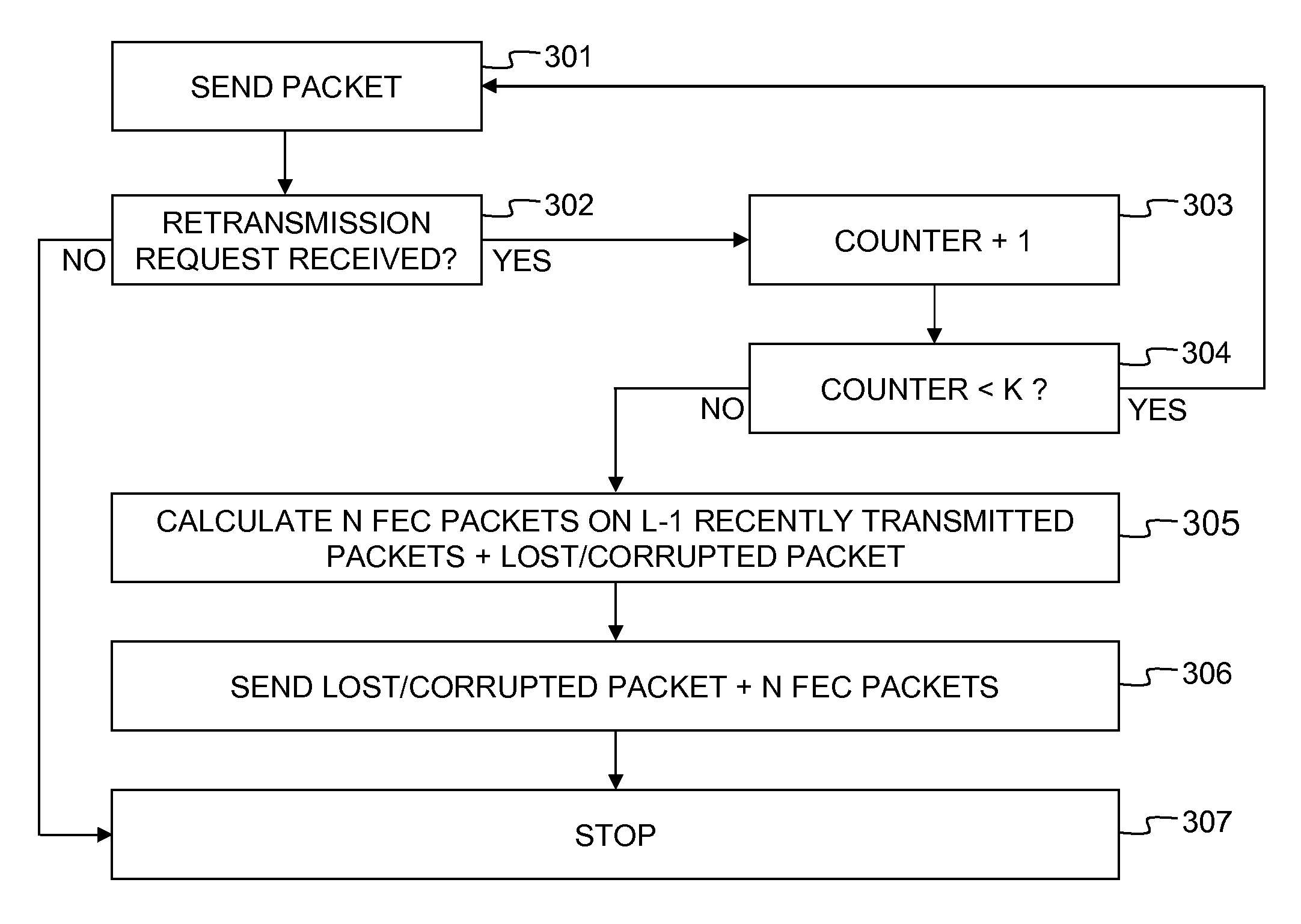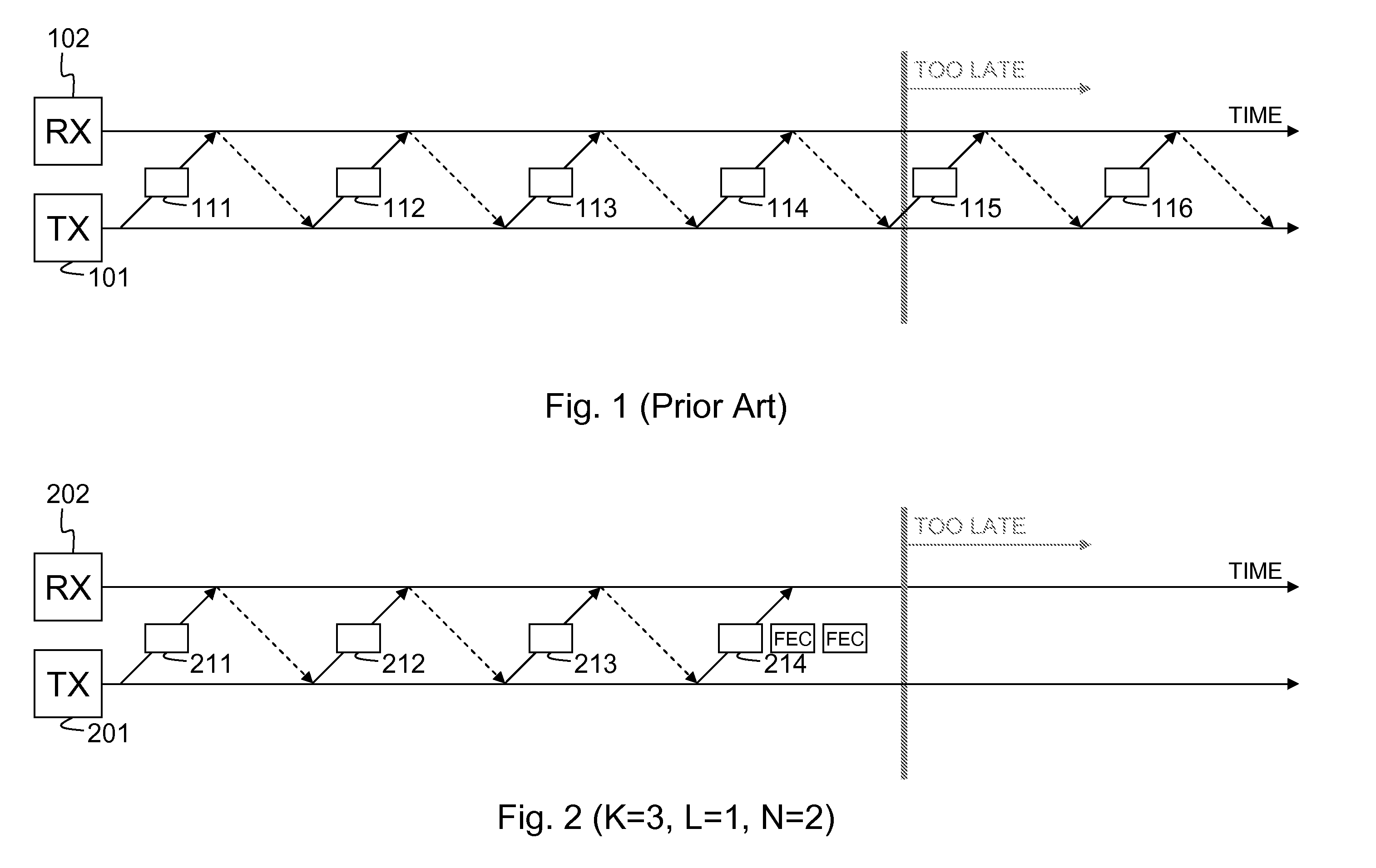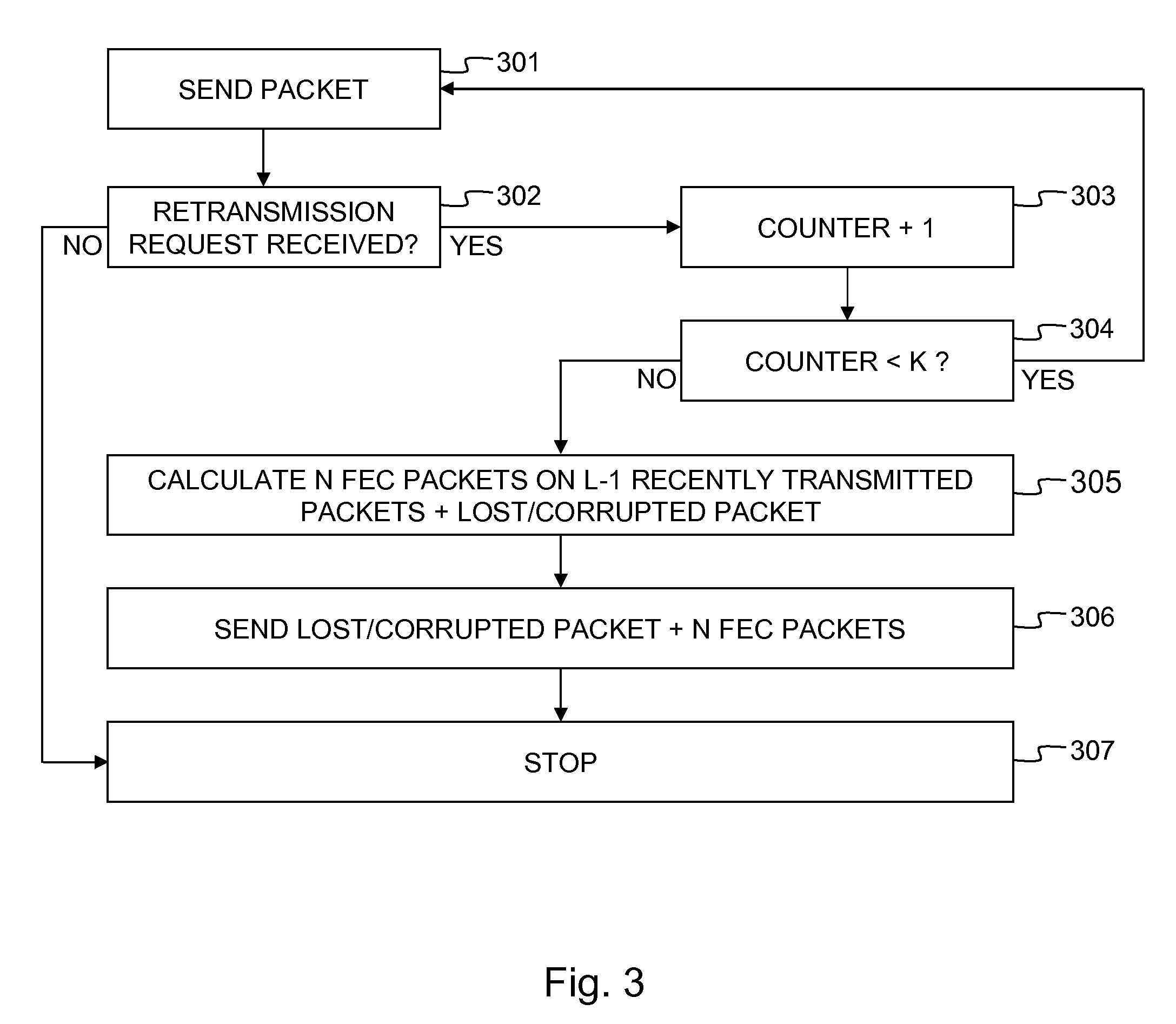Data packet retransmission and fec arrangement, and corresponding method
a data packet and data packet technology, applied in the field of data packet retransmission and forward error correction, can solve the problems of packet loss, packet loss, packet loss rate can amount to several percent, and achieve the effect of minimizing complexity
- Summary
- Abstract
- Description
- Claims
- Application Information
AI Technical Summary
Benefits of technology
Problems solved by technology
Method used
Image
Examples
Embodiment Construction
)
[0023] In FIG. 1 conventional retransmission over a DSL loop is illustrated. The round trip time, i.e. the time to send a video packet like 111 from the transmitter 101 integrated in the DSLAM to the receiver 102 integrated in the end user's video decoder plus the time to send a retransmission request back from the receiver 102 to the transmitter 101, is supposed to equal 35 milliseconds (note that this value is chosen by example: for interleaved DSL, values around 40 milliseconds are found in literature). The maximum acceptable delay in delivering video packets is assumed to be 150 milliseconds for zapping purposes. Packets that are delivered with a delay exceeding 150 milliseconds in other words arrive too late and cannot be used anymore for display to the viewer. The video packet 111 in FIG. 1 is supposed to be corrupted or lost on the DSL line. In response to the retransmission request, represented by the dashed arrow in FIG. 1, the transmitter 101 re-sends a copy of the video ...
PUM
 Login to View More
Login to View More Abstract
Description
Claims
Application Information
 Login to View More
Login to View More - R&D
- Intellectual Property
- Life Sciences
- Materials
- Tech Scout
- Unparalleled Data Quality
- Higher Quality Content
- 60% Fewer Hallucinations
Browse by: Latest US Patents, China's latest patents, Technical Efficacy Thesaurus, Application Domain, Technology Topic, Popular Technical Reports.
© 2025 PatSnap. All rights reserved.Legal|Privacy policy|Modern Slavery Act Transparency Statement|Sitemap|About US| Contact US: help@patsnap.com



